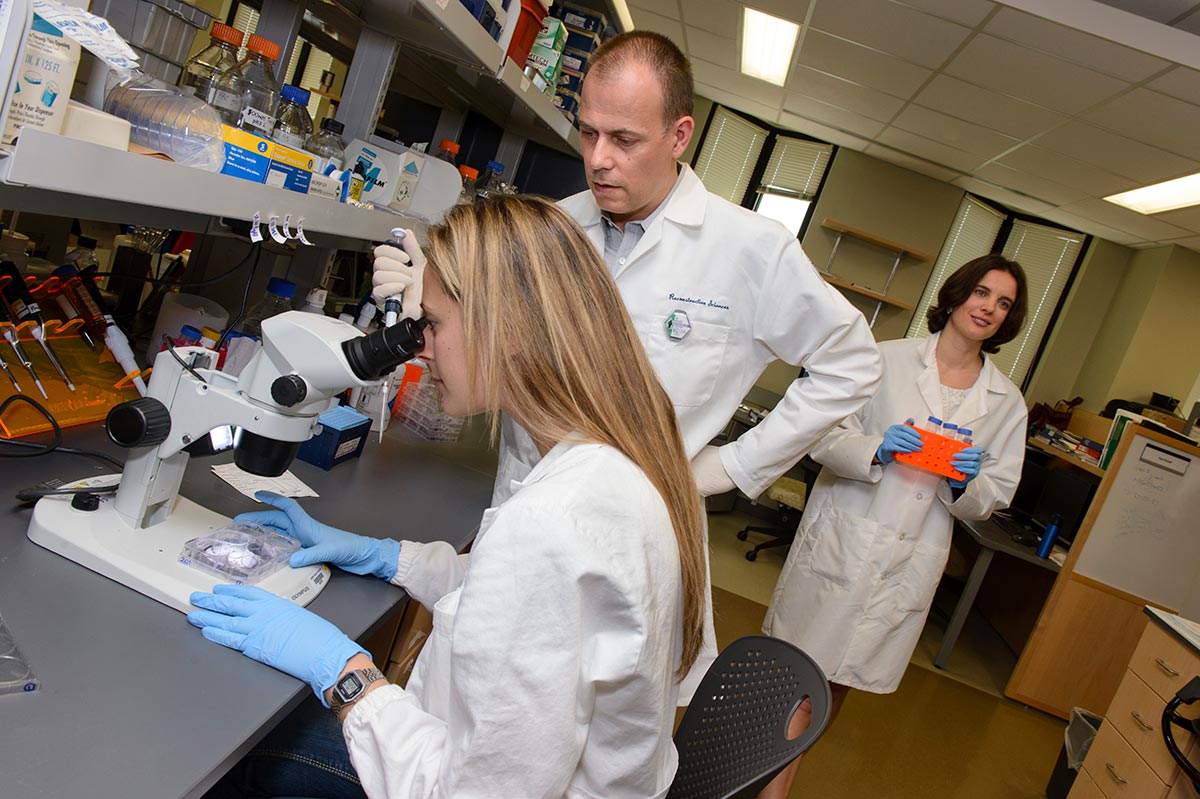The UConn School of Dental Medicine’s research portfolio goes well beyond teeth.
An analysis of grants from fiscal 2016, the most recent period of available figures, shows more than half the nearly $9 million in grants to UConn dental faculty was to study behavioral sciences and community health or regenerative medicine and skeletal development.
“Our research in the dental school is not just dental research,” says Dr. Rajesh Lalla, the UConn School of Dental Medicine’s associate dean for research. “We consider all research to be valuable, all new information to be valuable, and we value all kinds of research in the dental school.”

For example, Julie Wagner, professor of behavioral sciences and community health, is a clinical health psychologist who studies diabetes. The National Institutes of Health awarded her more than $3 million over five years, and she received a three-year grant of $540,000 from the American Diabetes Association.
Mark Litt, a professor of behavioral sciences and community health who studies addiction, has two NIH grants totaling almost $5.8 million over five years.
The $3.5 million awarded in fiscal 2016 for behavioral sciences and community health research represents almost 40 percent of the grant funding awarded to the dental school during that period. Concurrently, more than $2.5 million, nearly 30 percent, was brought in by faculty studying regenerative medicine and skeletal development, including:
- David Rowe, director, Center for Regenerative Medicine and Skeletal Development, who has two NIH grants totaling more than $4.8 million over five years,
- Liisa Kuhn, associate professor of biomedical engineering, who has a $1.9 million NIH grant over five years,
- Caroline Dealy, associate professor in the Center for Regenerative Medicine and Skeletal Development, who has a nearly $320,000 grant from the Department of Defense over two years, and
- Ivo Kalajzic, associate professor in the Center for Regenerative Medicine and Skeletal Development, who has three NIH grants totaling $2.2 million over five years.
Many of these grants involve collaborations with researchers in other departments and institutions. It’s indicative of a larger trend in the competitive world of federal grant application.

“In the past, people used to be able to kind of work alone and get grants, and nowadays grant reviewers almost expect you to be collaborating with various people,” Lalla says. “A lot of times the greatest advances are coming from interactions between people representing different disciplines at the cutting edge. It’s where the new insights or greatest advances are coming. It’s just the way that science is moving.”
The collaborative nature of the faculty, including dental, medical and others at the Storrs campus, is what puts the University in a favorable position, says Dr. Monty MacNeil, dean of the UConn School of Dental Medicine.
“We’re moving more and more to team-based science,” MacNeil says. “Typically it’s not one PI anymore. It’s a group of people and the diversity of its members make grant applications stronger. We are fortunate to have a collaborative group of faculty who create synergy in their science and in their grant applications.”
More than one third of fiscal 2016 funding came by way of grants from the NIH’s National Institute of Dental and Craniofacial Research, putting the UConn School of Dental Medicine at No. 14 among U.S. dental institutions in terms of amounts awarded by the NIDCR. Over the last 10 years, UConn’s average rank for NIDCR funding has hovered around 18th among the nation’s 65 dental schools.
That funding includes a research-focused training grant known as a T90, “an institutional grant that funds graduate research and training and that significantly augments and strengthens the research conducted by faculty within our school,” as MacNeil describes it.
Graduate students and postdoctoral fellows benefit from the T90 grant as they pursue the early phase of their academic research careers.
“Not only are we doing research, but we’re also helping train the next generation of researchers,” Lalla says. “We may be one of 10 or so dental institutions that has these training grants.”
MacNeil expects UConn’s new Biomedical Engineering Department, a collaboration of the UConn Schools of Medicine, Dental Medicine, and Engineering, will further elevate the University’s research funding profile. He says the first five recruits will be “research-intensive” and appointed within the dental school.



